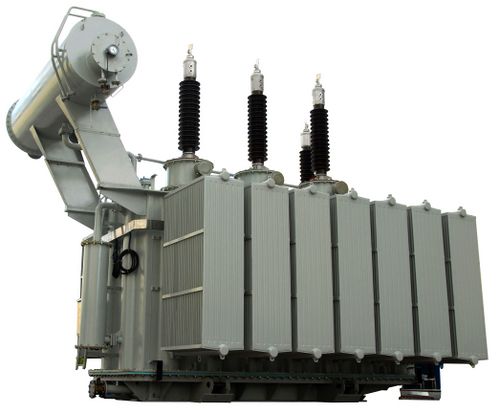Transformer Efficiency and Regulation
Introduction
The calculation of efficiency differs from IEC 60076 and ANSI C57.12 Standards because of the difference in defining rated kVA by these standards.
IEC 60076 Standard and ANSI C57.12 Standard
The rated power is defined by IEC 60076 as “When the transformer has rated voltage applied to a primary winding, and rated current flows through the terminals of a secondary winding the trans- former receives the relevant rated power for that pair of windings”.
This implies that it is a value of apparent power input to the transformer, including its own absorption of active and reactive power. The apparent power that the transformer delivers to the circuit connected to the terminals of the secondary winding under rated loading differs from the rated power. The voltage across the secondary terminals differs from the rated voltage by the voltage drop (or rise) in the transformer.
This is different from the definition as per ANSI C57.12.00 standard, where the rated kVA is defined as
The rated kVA of a transformer shall be the output that can be delivered for the time specified at rated secondary voltage and rated frequency without exceeding the specified temperature rise limitations under prescribed conditions of test, and within the limitations of established standards.
Calculation as per ANSI Standard
The efficiency of a transformer is the ratio of its useful power output to its total power input.


where
 efficiency (%)
efficiency (%) output
output input
input losses
losses
For power factor of "S" and load of "x" per unit, the formula for efficiency is

where
 efficiency (%)
efficiency (%) no-load loss (W)
no-load loss (W) load loss at full load at reference temperature (W)
load loss at full load at reference temperature (W) per unit load
per unit load power factor per unit
power factor per unit
The calculation of efficiency differs from IEC 60076 and ANSI C57.12 Standards because of the
difference in defining rated kVA by these standards.
Calculation as per IEC Standard
The voltage drop (or rise) of the transformer secondary will have to be considered, while the efficiency is calculated, as per IEC standard.

where
 efficiency (%)
efficiency (%) no-load loss (kW)
no-load loss (kW) (kVA)
(kVA) load loss (kW)
load loss (kW) power factor
power factor voltage drop (or rise) %
voltage drop (or rise) %
![{\displaystyle {U_{\phi n}}=n\times \left(rcos\phi +xsin\phi \right)+{\frac {\left[n\times \left(rsin\phi -xcos\phi \right)\right]^{2}}{200}}\,}](https://wikimedia.org/api/rest_v1/media/math/render/svg/22f7f323a5c85c7393361851d86a19e664705f79)
Example Calculations
An example for a typical power transformer.
Transformer parameters
- kVA – 1500
- Voltage ratio – 11/0.433
- % Impedance – 6.0
- % Resistance – 0.6
- % Reactance – 5.97
- No-load loss – 2.3 kW
- Load loss – 9.0 kW
Transformer Impedance

Efficiency at 100% load unity power factor
At unity power factor (full load)


- Voltage Drop

As per IEC Standard




As per ANSI Standard



Efficiency at 100% load 0.8 power factor
At 0.8 power factor (full load)


- Voltage Drop

As per IEC Standard




As per ANSI Standard



Efficiency at 50% load unity power factor
At unity power factor (50% load)
- Voltage Drop

As per IEC Standard




As per ANSI Standard



Efficiency at 50% load 0.8 power factor
At 0.8 power factor (50% load)
- Voltage Drop

As per IEC Standard




As per ANSI Standard



Transformer Regulations
The exact formula for calculation of regulation is as follows:
When the load is lagging:

When the load is leading:

where:
 power factor of load
power factor of load
 resistance factor of transformer
resistance factor of transformer

 resistance factor of transformer
resistance factor of transformer

 impedance factor
impedance factor
References
Power and Distribution Transformers - Practical Design Guide
© 2021 K.R.M. Nair
CRC Press

















![{\displaystyle {U_{\phi n}}=n\times \left(rcos\phi +xsin\phi \right)+{\frac {\left[n\times \left(rsin\phi -xcos\phi \right)\right]^{2}}{200}}\,}](https://wikimedia.org/api/rest_v1/media/math/render/svg/22f7f323a5c85c7393361851d86a19e664705f79)






































